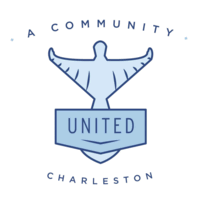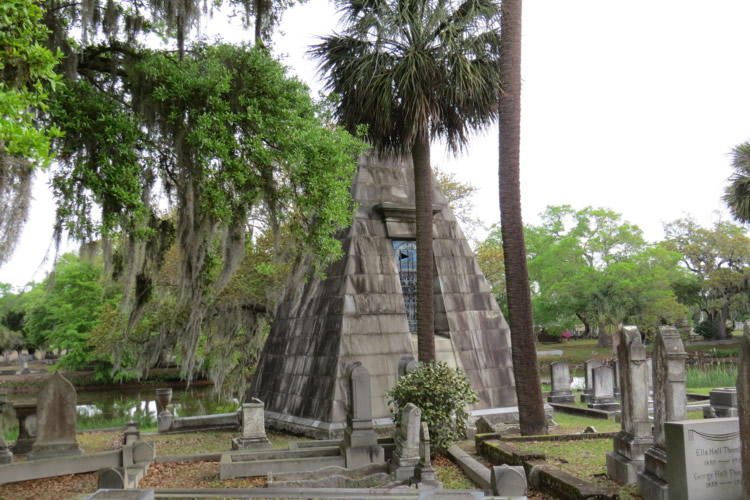AMERICA’S FLAG. Flapping flags lined Morrison Drive over the Fourth of July holiday weekend thanks to the Evening Exchange Club. With expected votes by state legislators this week to furl the Confederate flag on the Statehouse grounds, it’s good to remember that the nation has one flag with red signifying valor and sacrifice, white representing purity and goodness and blue symbolizing truth, justice and vigilance. Photo by Andy Brack.
IN THIS ISSUE
PHOTO: America’s flag
FOCUS: Increasing youth mentoring
BRACK: Fear must not win in S.C.
IN THE SPOTLIGHT: Kaynard Photography
SENIORS: What Medicare covers and what it doesn’t
PALMETTO POEM: “Officials Are Optimistic,” by Gilbert Allen
GOOD NEWS: A Community United event, more
FEEDBACK: Send us your letters
CALENDAR: Redux event, Ansari reading, more
REVIEW: Death by Darjeeling, by Laura Childs
MYSTERY: Kind of creepy looking
S.C. ENCYCLOPEDIA: Gov. Cole Blease
TODAY’S FOCUS
Two groups seek to increase youth mentoring
By Nicole LaChance
JULY 6, 2015 | Two Charleston-area organizations are expanding their existing partnership in hopes of increasing the long-term success of local youth and boosting the region’s economic future. Be a Mentor, an in-school mentoring program that works to ensure that every child in the Lowcountry has a caring adult in their lives, and Charleston Young Professionals (CYP), Charleston’s premier organization for young professionals, aim to involve 10 percent of CYP members in mentoring by the end of the year.
 The partnership, which started in 2014, encourages young professionals across the Charleston area to become mentors to disadvantaged youth in tri-county schools through CYP’s Mentor Program. Volunteer mentors from CYP take an active role in shaping the region’s future by fostering leadership skills in their mentees and preparing them for post-secondary education and fulfilling careers in local industry. Additionally, volunteers have a chance to be mentored themselves by a local business professional. The Mentor Program allows individuals to help develop the region’s workforce and ensure the Charleston Metro produces career-ready young adults.
The partnership, which started in 2014, encourages young professionals across the Charleston area to become mentors to disadvantaged youth in tri-county schools through CYP’s Mentor Program. Volunteer mentors from CYP take an active role in shaping the region’s future by fostering leadership skills in their mentees and preparing them for post-secondary education and fulfilling careers in local industry. Additionally, volunteers have a chance to be mentored themselves by a local business professional. The Mentor Program allows individuals to help develop the region’s workforce and ensure the Charleston Metro produces career-ready young adults.
“Student mentees love being able to engage with and learn from someone close to their own age. YPs serve as energetic role models and really help mentees visualize where they see themselves in 10-15 years,” said Eileen Burkhardt, Director of Operations at Be a Mentor. “Spending time with their mentees gives YPs a sense of responsibility and purpose – they have a hand in shaping the life of their individual mentee, but also in shaping the future of Charleston.”
Mentors meet with students at their school once a week, typically during the students’ lunch period. At the elementary school level, mentors focus on the development of social and emotional skills. With middle and high school students, mentors assist mentees in strengthening leadership skills and preparing for post-secondary education or a career. Be a Mentor has been able to place 24 mentors with youth in various grades in Charleston and Berkley County schools through CYP.
In an effort to attract more mentors, the organizations are hosting a joint event for CYP members interested in mentoring on July 21 at 8 p.m. at the Bay Street Biergarten (549 E. Bay Street, Charleston). Attendees will get the chance to compete in trivia, sample drink specials and learn more information about getting involved with Be a Mentor. The event is free and open to all CYP members.
CYP’s partnership with Be a Mentor helps to fulfill one of the organizations major priorities: professional development. This focuses both on the professional development of individual members and the development of the Charleston Metro area as a hub for businesses and industry. Other development programs include YP 101 and YP Fuel, which provides members with skills necessary to become regional leaders through relevant speakers and events.
Be a Mentor and CYP hope to have at least 110 young professionals involved in mentoring by the end of 2015.
- For more information about Be a Mentor or to become a mentor, visit www.beamentornow.org.
- For more information about Charleston Young Professionals and membership, visit www.charleston-yp.com.
Fear must not win in South Carolina
By Andy Brack
JULY 6, 2015 | In the midst of the pall cast over the state following the Charleston church massacre, you might have missed last week’s Miss South Carolina pageant.
Ten days after the shootings that left nine dead and shocked the world, the show went on in Township Auditorium in Columbia. What came out of it highlights the stuff South Carolina is really made of.
When 22-year-old Clemson student and contestant Daja Dial of Spartanburg was asked during the pageant about what should be done![]() about the Confederate flag on Statehouse grounds, she said:
about the Confederate flag on Statehouse grounds, she said:
“It’s a new South Carolina. We have made so much progress and it’s time to take it down. As Miss South Carolina, I can lead this state into a new era. And that flag being taken down is representative of that. I’m in this moment now for a reason. God has made this happen for a reason. I think it’s time for us to show what South Carolina is really like.”
Later after being crowned the new Miss South Carolina, Dial went further: “Why have that still there when we’ve made so much progress. Let’s put it in a museum where it belongs.”
Dial, the third African American to hold the state title, channeled what many in South Carolina believe and what the world has seen since the June 17 shootings.
On July 6, members of the legislature will meet to talk about taking the flag off the Statehouse grounds following a bipartisan June 22 plea led by Gov. Nikki Haley. According to various media surveys, there appear to be enough votes to remove the flag, a symbol of heritage to some, but a representation of fear and hatred to more.
Steve Skardon, executive director of the nonprofit Palmetto Project, suggests to those who don’t want to see the flag come down that they won’t really lose anything.
“It’s not being abolished,” said Skardon, whose organization is coordinating a memorial fund to do good works that honor slain state Sen. Clementa Pinckney, reflected. “It simply says that as far as the state goes, it’s not appropriate for the state government to be using that emblem to represent the whole state.”
If debate heats up in the days ahead on the Statehouse floor and turns ugly, let’s keep the whole thing in perspective — taking the flag down doesn’t make it go away. It just makes the Statehouse grounds to be a more neutral ground without a hot-button icon vividly poking many people in their eyes.
We also have to realize that taking the flag down doesn’t mean the fear it inspires in some and hate it represents in others doesn’t make either vanish. In one sense, taking down the flag is easy compared to working together to curb fear and hate.
Through the years, the Palmetto Project has sponsored community forums across the state to deal, in part, with the diversity we have and racial issues that remain. Organizers worked to reach broadly in communities to bring people together to get to know each other, not talk about race.
All parents, Skardon says, have similar dreams — to have good schools, good jobs, safe neighborhoods and bright futures. But when neighbors — white, brown and black — don’t really know people who look different from them, they sometimes worry that somebody else might change their lives. In that environment, fear can grow.
“We all want the same vision for our communities, but we just don’t know that,” Skardon says.
What we have to do, just like people in Charleston have done in recent weeks as they mourned, is to come together and get to know each other better.
Creating broad community-wide dialogues — people just getting to know each other better — will make communities healthier and help stamp out the fear that leads us to the dark side, as the character Yoda noted in a movie: “Fear leads to anger. Anger leads to hate. Hate leads to suffering.”
Fear, anger and hate must not win in South Carolina. Our state is still mourning. But we’re also healing. Daja Dials exist here by the tens of thousands. As outsiders realize that, they’ll change their minds about the Palmetto State. And we’ll blossom, too.
Andy Brack is editor and publisher of Charleston Currents and Statehouse Report. You can reach him at: mailto:editor@charlestoncurrents.com
IN THE SPOTLIGHTKaynard Photography
 The public spiritedness of our underwriters allows us to bring Charleston Currents to you at no cost. Today we shine our spotlight on Kaynard Photography, a business run by contributing photographer Michael Kaynard of West Ashley. Kaynard Photography grew from Michael’s love of walking the streets of the Charleston’s historic district. It developed into a passion for capturing everything Charleston through a camera lens. Kaynard can be seen walking the streets of Charleston many days from dawn to darkness. He calls his work “At Street Level.” His photos are available for viewing and sale at kaynardphotography.com.
The public spiritedness of our underwriters allows us to bring Charleston Currents to you at no cost. Today we shine our spotlight on Kaynard Photography, a business run by contributing photographer Michael Kaynard of West Ashley. Kaynard Photography grew from Michael’s love of walking the streets of the Charleston’s historic district. It developed into a passion for capturing everything Charleston through a camera lens. Kaynard can be seen walking the streets of Charleston many days from dawn to darkness. He calls his work “At Street Level.” His photos are available for viewing and sale at kaynardphotography.com.
- Now headquartered at 114 East Bay Street in the W. Hampton Brand Gallery across from Rainbow Row in the Charleston Historic District.
What does Medicare pay for?
By Mary Ross McQuage
JULY 6, 2015 | At least once a week as I am providing guidance and referrals to families making plans for their elderly loved ones, I have to break the news that Medicare is not going to pay for their long-term care needs, either in a nursing home or at home. Many people assume that Medicare is going to cover all of their needs as they age. The typical response to finding out this is not true is, “Well, what exactly DOES Medicare pay for?”
 The following is a short breakdown of what is covered by Medicare:
The following is a short breakdown of what is covered by Medicare:
- Medicare Part A (hospital insurance) – inpatient care in a hospital, inpatient rehabilitation, hospice, lab tests, surgery, home health care.
- Medicare Part B (medical insurance) – physicians and other health care providers’ services, outpatient care, some equipment, home health care, preventive services.
- Medicare Part D – prescription coverage will depend on which prescription drug plan you choose
Perhaps more importantly, here are some of the commonly needed services that Medicare DOES NOT cover:
- Long-term care – also called “custodial” care or non-medical home care
- Most dental care
- Eye examinations related to prescribing glasses
- Dentures
- Hearing aids
The most costly of these non-covered items is long-term care. Average costs for care in South Carolina are $19 per hour for non-medical home care, $3,200 per month for assisted living, and $6,000 per month for nursing home care.
So how are these needs going to be paid for? Saving and planning ahead are essential to cover these expenses. When should you start saving and planning for your long term care needs? No matter your age, the answer is now.
Barbara Franklin of Franklin and Associates works in long term care planning and financing.
“The average age of people applying for long term care insurance today is 57 but the younger you are when you apply, the lower the cost and the more likely that your health will enable you to qualify,” she said. “Fortunately there are a range of insurance options available today including traditional long term care policies, short term care policies as well as hybrids that combine life insurance or an annuity with long term care.”
Medicare is a health insurance that is designed to cover medical care. It is not designed to cover all of the extensive needs of long term care. Understand the limitations of Medicare coverage now so that you are not caught off guard with unexpected care expenses down the road.
Mary Ross McQuage, LISW-CP, is a certified Geriatric Care Manager and the owner of Aging Resources, a geriatric care management practice in Charleston.
PALMETTO POEM“Officials Are Optimistic He Has Been Killed”
—Radio news report, after a surgical strike in northwestern Pakistan
Driving, I barely hear—because
on Route 291,
beside the Greenville cemetery,
this afternoon’s big wind
has filled the world before my eyes
with real plastic roses.
A winter garden? Lost parade?
Whatever one supposes,
I guess—gas on tires, tires
over the rainbow roil
of slick colors, on striped asphalt.
Oil on oil on oil
on oil. It used to be
alive. This potpourri.
Gilbert Allen has lived in northern Greenville County since 1977. He is the Bennette E. Geer Professor of Literature Emeritus at Furman University and a member of The South Carolina Academy of Authors. “Officials Are Optimistic” is from his sixth collection of poems, Catma (Measure Press, 2014).
GOOD NEWS“A Community United” benefit set for Thursday
Charleston’s food and beverage community will honor the victims, families and congregation of Mother Emanuel AME Church with “A Community United” gathering from 6 p.m. to 9 p.m. Thursday, July 9.
 “One hundred percent of the proceeds of the entire event will go to the families,” says organizer Mickey Bakst.
“One hundred percent of the proceeds of the entire event will go to the families,” says organizer Mickey Bakst.
The event, which will be held in the Grand Ballroom of Charleston Place at 205 Meeting St., will feature a silent auction, which includes a safari trip and more than 100 works of art. Additionally, there’s an online auction that’s going on now that n filled with a host of donated gifts, such as special dinners, holidays, wine, art, outings and even an old pickup truck. As of July 6, more than $80,000 has been raised through the online action, which you can visit here:
https://bidr.co/events/acommunityunited
The link will also allow you to buy tickets for the $200 per person event. (Video of A Community United from Hunter Boone on Vimeo)
In other good news:
- New exhibit to open July 18. “Remnants of the Rice Culture – Agricultural History as Art” is a new exhibit that will open July 18 at the City Gallery at Waterfront Park that features photography by David Shriver Soliday.
An opening reception for the exhibition, curated by Mark Long, will be 6 p.m. July 17. An artist’s talk is scheduled for 2 p.m., August 15. Both are free.
“Remnants of the Rice Culture – Agricultural History As Art” showcases the genesis and genealogy of the coastal rice production complex once known as the Rice Empire. This collection documents man’s 300-year-old record upon the landscape and explores the intersection between agricultural history and art. Soliday’s aerial perspective distinguishes the subtle fading imprints of rice production and frames the monumental scale of the precisely constructed fields, dikes and canals in ways otherwise difficult to apprehend. Highlighting the role of African-American labor and expertise in transforming the native swamplands into a highly engineered hydraulic machine, the artist’s compelling images, presented on infused aluminum sheet metal, prompt varied dialogues about the physical landscape, human capability and intervention, and the rice industry’s enduring environmental and social impact.
Soliday, a Connecticut native, is a graduate of Amherst College who lived near ricefields for 25 years starting in 1976. A commercial photographer, his works have been in National Geographic, National Wildlife and Smithsonian magazines. His first major exhibition was in 1977 at the Gibbes Museum of Art.
- Marketer of the Year. Gina Ellis-Strother, marketing director for the Charleston County Park and Recreation Commission, recently was named “Marketer of the Year” by the American Business Awards. The award is known as the “Golden Stevie.”
A marketing professional with 20 years of experience, she joined the commission staff in 2013.
Major accomplishments undertaken during Ellis-Strother’s first year as director included the launching of a rebranding effort, the consolidation of print material to allow for cross-promotional opportunities, and the debut of an aesthetically-pleasing new website with enhanced search and navigation capabilities, according to a news release. She also spearheaded TV, radio and promotional campaigns.
- For more information on The American Business Awards, visit StevieAwards.com.
Send us a letter
Rant. Rave. Tell us what you really think. If you have an opinion on something we’ve offered or on a subject related to the Lowcountry, please send your letters of 150 words or less to: editor@charlestoncurrents.com. Our feedback policy.
CALENDARJuly 6+: Fundraisers, readings, plays, more
(NEW) Patti Callahan Henry: Noon, July 6, Halls Chophouse, 434 King Street, Charleston. Blue Bicycle Book’s Charleston Author Series will host New York Times bestselling author Patti Callahan Henry at a $30 three-course lunch and hear her talk about her latest novel, The Idea of Love. More. BlueBicycleBooks.com
(NEW) Redux fundraiser: 6 p.m. to 9 p.m., July 11, 136 St. Philip Street, Charleston. There will be a raffle, live music, creation of a community wall m ural and more at the event with drinks from Holy City Brewing as well as cocktails, pizza, Creole cooking and more. Original artwork will be raffled as well as prints by Shepard Fairey and Dos Bandidos. Raffle tickets will be available for $10 each or three for $25. More: http://www.reduxstudios.org
ural and more at the event with drinks from Holy City Brewing as well as cocktails, pizza, Creole cooking and more. Original artwork will be raffled as well as prints by Shepard Fairey and Dos Bandidos. Raffle tickets will be available for $10 each or three for $25. More: http://www.reduxstudios.org
(NEW) Ansari reading: 7:30 p.m., July 11, Sottile Theatre, 44 George St., Charleston. South Carolina’s own Aziz Ansari will make a stop on a book tour in Charleston in relation to his new book, Modern Romance. Tickets and the book are $52, but the book must be picked up before 6 p.m. July 11 event at Blue Bicycle Books on King Street. More: Visit www.bluebicyclebooks.com/news or call 843.722.2666.
(NEW) Mastermind Exchange: 6 p.m. to 8 p.m., July 14, at Local Works, 1630-2 Meeting St., Charleston. The Center for Women’s S.C. Women’s Business Center is offering a two-hour event with food & drink to bring seasoned entrepreneurs together to help foster connections and create Mastermind groups for growth. Cost: $30 for C4Women members; $40 others. More info.
(NEW) Butterflies Are Free: 8 p.m., July 18 and 19, Edisto Civic Center, 42 Station Court, Edisto Island. This coming-of-age comedy is staged by Coastal Stage Productions, a new theater and event company based in Ridgeland. Tickets are $15. More info: 912-656-1598.
Fishing tournaments. The county’s monthly fishing tournaments kicked off in May with contests at the Mount Pleasant and Folly Beach piers. Both cast-off tournaments feature several awards and prizes for anglers from 3 years old to seniors. Tournaments in Mount Pleasant are slated for Sept. 5 and Oct. 3. Tournaments are to be held on Folly Beach Pier on July 18 and Aug. 15. More info.
Book sale: July 23-25, John’s island Regional Library, 3531 Maybank Highway, John’s Island. Prices start at 50 cents for fiction, non-fiction, children’s books and more with proceeds to benefit the Charleston County Public Library. Three-day event plus special member event. More.
Shaking a leg. The Folly Beach Pier is set to have more Moonlight Mixers throughout the summer starting at 7 p.m. A DJ will spin great old tunes to keep your feet moving. Dates are July 24, Aug. 21 and Sept. 18. In Mount Pleasant, the Shaggin’ on the Cooper series will be held July 18, Aug. 15 and Sept. 12. Click here for more.
Natural history exhibit: Through Aug. 10, 2015. “From Land to Sea: 35 Million Years of Whale Evolution” will be featured in The Charleston Museum’s lobby gallery with displays of whale fossils from millions of years ago. There’s limited availability for an overview by Natural History Curator Matthew Gibson on opening night. Learn more.
Bird walks: 8:30 a.m. to noon, every Wednesday and Saturday. This is the time of year that a great variety of migrating birds fly through the Lowcountry so what better time to take part in one of the regular early morning bird walks at Caw Caw Interpretive Center in Ravenel. Pre-registration is suggested. Cost is $5. Walks also are conducted on James Island and Folly Beach. Learn more online.
If you have an event to list on our calendar, please send it to editor@charlestoncurrents.com for consideration. The calendar is updated weekly on Mondays.
REVIEWDeath by Darjeeling
A novel by Laura Childs
Death by Darjeeling is a cozy mystery set in the historic district of Charleston, S.C. More specifically, the plot unfolds in a tea shop on Church Street called Indigo Tea Shop. This little gem of a shop is owned by Theodosia Browning and![]() is run by three unique characters: Theodosia (owner), Drayton Conneley (assistant/professional tea blender/master tea taster—and personally my favorite character in the book), and Haley Parker (shop clerk/baker/student).
is run by three unique characters: Theodosia (owner), Drayton Conneley (assistant/professional tea blender/master tea taster—and personally my favorite character in the book), and Haley Parker (shop clerk/baker/student).
The Indigo Tea Shop has created a special tea for the annual Lamplighter Tour which is going wonderfully until slick developer Hugh Barron is found poisoned. It’s up to Theodosia to find out who poisoned Hugh Barron before it destroys her business.
This is a quick read that is great for the beach with its fun cast of characters and rich sceneries wonderfully created by Laura Childs. The only disappointment is that the book ended too quickly; thankfully there is a whole series where similar adventures continue depicting Theodosia and the Indigo Tea Shop.
— Whitney Lebron, Mount Pleasant Regional Library, Mount Pleasant, S.C.
Find this and similar titles from Charleston County Public Library. This item available as a book. To learn more or place a hold, visit www.ccpl.org or call 843-805-6930.
MYSTERY PHOTOKind of creepy looking
We’re betting this image won’t be too tough for many long-time Charlestonians, but then again, who knows? Fourth correct answer of the location of this photo gets a pair of RiverDogs tickets. Send your entry — plus your name and hometown — to editor@charlestoncurrents.com. Photo by Michael Kaynard, Kaynard Photography.
- If you have a picture with which you’d like to stump our readers, send it along to editor@charlestoncurrents.com.
Gov. Cole Blease
S.C. Encyclopedia | A state governor and U.S. senator, Coleman Livingston Blease was born near Newberry on Oct. 8, 1868, the son of Henry Horatio Blease and Mary Ann Livingston. From 1884 to 1886, Blease attended Newberry College, and he earned a bachelor of laws degree from Georgetown University in 1889. He was admitted to the South Carolina Bar that same year. In 1890, Blease married Lillie B. Summers, who died in 1914. In 1939, he married Caroline Floyd, but the couple separated a year later. Both marriages were childless.
Blease entered public service in 1890, when he was elected to represent Newberry in the S.C. House of Representatives. Reelected in 1892, he was elevated to the position of Speaker Pro Tempore of the sixtieth General Assembly (1892–1893). Defeated in reelection bids in 1894 and 1896, Blease returned to the House in 1899. He was ambitious for higher office and made unsuccessful runs for the office of lieutenant governor in 1900 and 1902, then won election to the S.C. Senate from Newberry in 1905. Two years later he served as President Pro Tempore of the Senate for the sixty-seventh General Assembly (1907–1908). Blease ran unsuccessfully for governor in 1906 and 1908 but won the office in 1910 and was subsequently reelected in 1912.
Blease’s two terms as governor were the high-water mark of perhaps the most polarizing figure in South Carolina political history. His appeal was primarily among a new class of South Carolinians that emerged early in the twentieth century: the white mill worker. Part of Blease’s attraction among mill workers was his flamboyant style and his unmatched stump-speaking ability. But he also identified with working-class whites, especially the mill workers, and capitalized on their desire to be treated as equals. Blease understood their fear that they were being marginalized by middle-class society. While critics saw him as nothing more than a demagogue and as lacking any concrete substance, “Coley” became the champion of mill workers who had little use for progressive “do-gooders” or government regulators who intruded in their workplaces and homes. Neither reformer nor innovator, Blease was an obstructionist who blocked legislation that threatened the ability of operatives “to manage their own affairs.” Confronting Blease’s overwhelming support from mill operatives was his equally solid opposition among middle- and upper-class South Carolinians, who denounced “Bleasism” as a threat to law and order. The controversy surrounding Blease brought supporters and opponents to polls in staggering numbers, with voter participation topping eighty percent in the 1912 gubernatorial campaign.
As governor, Blease emphasized individual freedom for whites and racism. He opposed government regulation, even if its purpose was to benefit the same mill workers to whom he appealed. He denounced an act to limit working hours for mill employees, believing it interfered with parents’ control over their children. He vetoed legislation to inspect factories for safety and health considerations, stating that a man ought to be able to work under any conditions he chose. He opposed compulsory education as an attempt to replace parents with “the paid agents of the State in the control of children,” and he vetoed four compulsory attendance bills while governor..
 While promoting equality for white mill workers, Blease also appealed to racial bigotry and accused opponents of attempting to reduce white mill workers to the same level as African Americans. He labeled blacks as “baboons” and “apes” and urged that there be no spending of white men’s taxes on black schools. As governor, Blease promoted separation of the races on chain gangs and defended lynching, stating, “whenever the Constitution comes between me and the virtue of the white women of the South, I say to hell with the Constitution.” He promised that he would pardon any lyncher convicted by a jury. Blease’s relationship with the General Assembly was tumultuous, and his numerous vetoes were frequently overridden by the legislature.
While promoting equality for white mill workers, Blease also appealed to racial bigotry and accused opponents of attempting to reduce white mill workers to the same level as African Americans. He labeled blacks as “baboons” and “apes” and urged that there be no spending of white men’s taxes on black schools. As governor, Blease promoted separation of the races on chain gangs and defended lynching, stating, “whenever the Constitution comes between me and the virtue of the white women of the South, I say to hell with the Constitution.” He promised that he would pardon any lyncher convicted by a jury. Blease’s relationship with the General Assembly was tumultuous, and his numerous vetoes were frequently overridden by the legislature.
Despite his volatile tenure, there were some accomplishments during his reign as governor. These included the establishment of a state tuberculosis sanitarium, the adoption of the medical college in Charleston as a public institution, the creation of a special tax on hydroelectric companies, the support for better provision for common schools, and the abolition of the penitentiary hosiery mill because of unhealthy conditions.
Blease resigned as governor five days before the end of his term so that he would not have to hand his office over to Richard I. Manning, who was elected on an anti-Blease platform of progressive reform. Blease failed in attempts to return to the governor’s chair in 1916 and 1922, and likewise failed in 1914 and 1918 to win election to the U.S. Senate. However, in 1924 he won election to the U.S. Senate with the slogan “Roll up yer sleeves and say what cha’ please; the man fer the office is Cole L. Blease.” During his one term Blease had no influence in national Democratic circles since he refused to be bound by party caucuses.
In 1930 he was defeated in his bid for reelection by James F. Byrnes. Although he still enjoyed a loyal following in South Carolina, Blease never again commanded enough votes to return to the governor’s mansion, losing attempts in 1934 and 1938. In 1941 he was elected a member of the State Unemployment Compensation Commission. He died on January 19, 1942, in Columbia and was buried in Newberry.
– Excerpted from the entry by William V. Moore. To read more about this or 2,000 other entries about South Carolina, check out The South Carolina Encyclopedia by USC Press. (Information used by permission.)
OUR UNDERWRITERS
Charleston Currents is an underwriter-supported weekly online journal of good news about the Charleston area and Lowcountry of South Carolina.
- Meet our underwriters
- To learn more about how your organization or business can benefit, click here to contact us. Or give us a holler on the phone at: 843.670.3996.
ABOUT US
Charleston Currents offers insightful community comment and good news on events each week. It cuts through the information clutter to offer the best of what’s happening locally.
- Mailing address: P.O. Box. 22261 | Charleston, SC 29413
Phone: 843.670.3996
Charleston Currents is provided to you twice a week by:
- Editor and publisher: Andy Brack, 843.670.3996
- Contributing photographer: Michael Kaynard
- Contributing editor, real estate: Doug Holmes
- Contributing editors, seniors: Catherine LaFond, Mary Ross McQuage
- Contributing editor, money: Kyra Morris
- Contributing editor, Palmetto Poem: Marjory Wentworth
SUBSCRIBE FOR FREE
Subscriptions to Charleston Currents are free.
- Click here to subscribe.
- Unsubscribe. We don’t want to lose you as a reader of Charleston Currents, but if you must depart, please click here.










 We Can Do Better, South Carolina!
We Can Do Better, South Carolina!
























